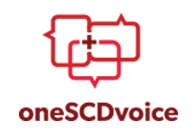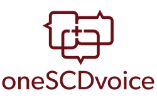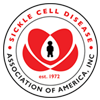Trusted Resources: Evidence & Education
Scientific literature and patient education texts
Newborn screening and prophylactic interventions for sickle cell disease in 47 countries in sub-Saharan Africa: a cost-effectiveness analysis
source: obstetrics & Gynecology
year: 2016
authors: Kuznik A, Habib AG, Munube D, Lamorde M
summary/abstract:BACKGROUND:
Sickle cell disease (SCD) constitutes a major public health problem in sub-Saharan Africa (SSA). Newborn screening and early subsequent clinical intervention can reduce early mortality and increase life expectancy, but have not been widely implemented in SSA. This analysis assesses the cost-effectiveness of a newborn screening and prophylactic intervention (NSPI) package for SCD in 47 SSA countries.
METHODS:
A lifetime Markov model with annual cycles was built with infants either being screened using isoelectric focusing (IEF) or not screened. Confirmed positive cases received interventions including insecticide-treated mosquito bed nets, folic acid supplementation, prophylactic antimalarial and penicillin therapy, and vaccinations against bacterial infections. Estimates for the local incidence of SCD, the life expectancy of untreated children, the SCD disability weight, and the cost of screening laboratory tests were based on published sources. Among treated infants, the annual probability of mortality until 30 years of age was derived from a pediatric hospital-based cohort. The outcome of interest included a country-specific cost per Disability Adjusted Life Year (DALY) averted.
RESULTS:
Of 47 modeled countries in SSA, NSPI is almost certainly highly cost-effective in 24 countries (average cost per DALY averted: US$184); in 10 countries, it is cost-effective in the base case (average cost per DALY averted: US$285), but the results are subject to uncertainty; in the remaining 13, it is most likely not cost-effective. We observe a strong inverse relationship between the incidence rate of SCD and the cost per DALY averted. Newborn screening is estimated to be cost-effective as long as the incidence rate exceeds 0.2-0.3 %, although in some countries NSPI is cost-effective at incidence rates below this range. In total, NSPI could avert over 2.4 million disability adjusted life years (DALYs) annually across SSA.
CONCLUSIONS:
Using IEF to screen all newborns for SCD plus administration of prophylactic interventions to affected children is cost-effective in the majority of countries in SSA.
DOI: 10.1186/s12913-016-1572-6
read more full text
Related Content
-
Malaria-Driven Sickle Cell Trait Selection – Evidence for Modern Day Human Evolution?Sickle cell disease poses a serious heal...
-
Association of Matched Sibling Donor Hematopoietic Stem Cell Transplantation With Transcranial Doppler Velocities in...Importance: In children with sickle cel...
-
Explaining Blood Transfusions to a Child With Sickle Cell DiseaseYou are receiving this brochure because ...
-
First World Cord Blood Day on Nov. 15 to Highlight Cord Blood Uses, Stem Cell ResearchThe inaugural World Cord Blood Day on No...
-
Advances in the Treatment of Sickle Cell Disease: L-Glutamine, Crizanlizumab & Gene Therapyhttps://www.youtube.com/watch?v=wkm4axJ3...
-
Could Gene Therapy Cure Sickle Cell Anemia?https://www.cbsnews.com/video/could-gene...
-
Effort set to help sickle cell patients manage medsVanderbilt University Medical Center is ...
To improve your experience on this site, we use cookies. This includes cookies essential for the basic functioning of our website, cookies for analytics purposes, and cookies enabling us to personalize site content. By clicking on 'Accept' or any content on this site, you agree that cookies can be placed. You may adjust your browser's cookie settings to suit your preferences. More Information
The cookie settings on this website are set to "allow cookies" to give you the best browsing experience possible. If you continue to use this website without changing your cookie settings or you click "Accept" below then you are consenting to this.




 +myBinder
+myBinder
